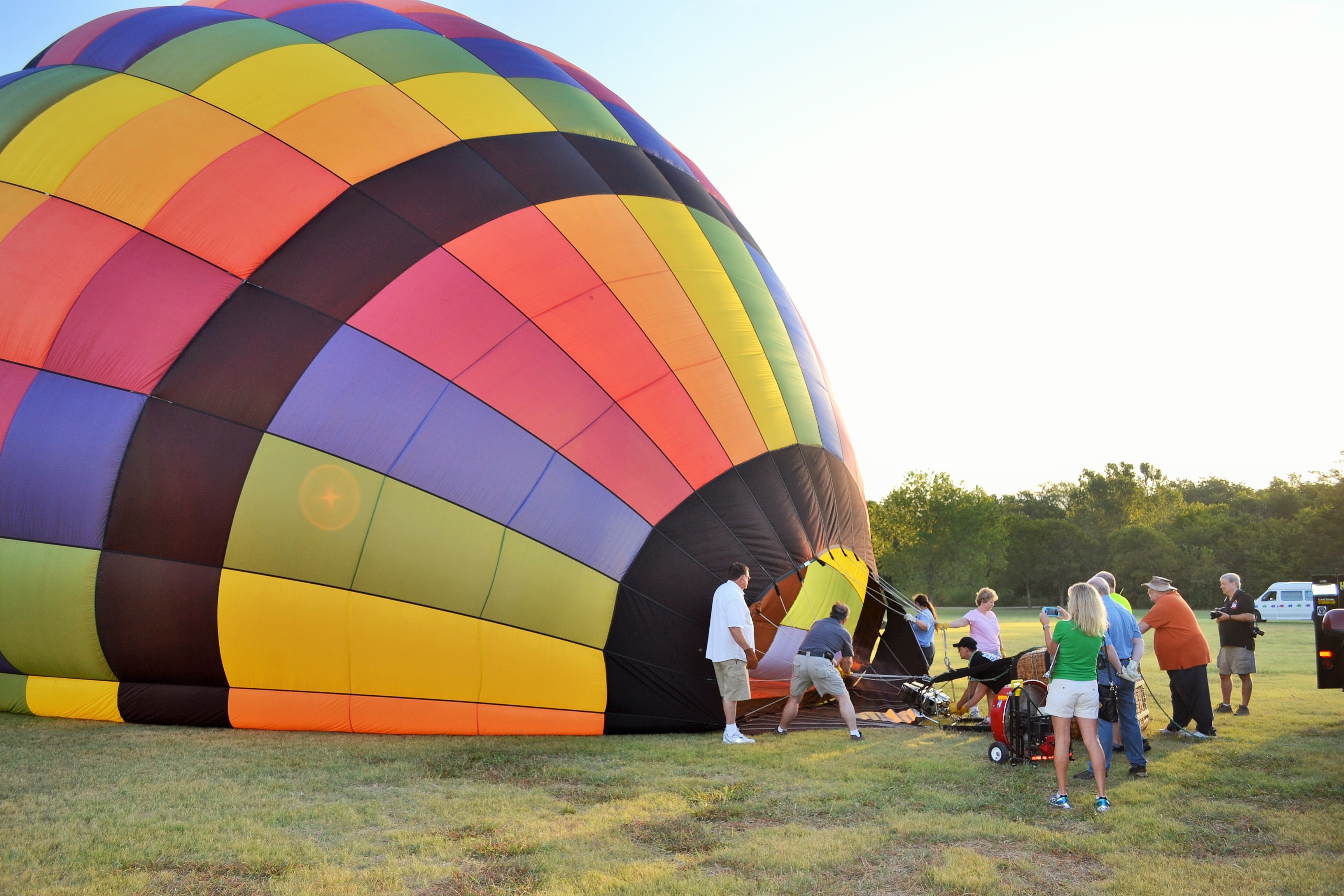Hot Air Balloon Photo Tips
Photographing hot air balloons—whether during the magical glow of the evening or the breathtaking moments of a sunrise launch—can yield truly memorable images. Here are some tips for those looking to capture the vibrant beauty and unique ambiance of the Plano Balloon Festival.

Plano Balloon Festival Glow / Ft. Worth Magazine
Tips for Balloon Glow (Night Photography)
Use a Tripod: Balloon glows happen in low light. A stable tripod is essential for keeping images sharp when using slower shutter speeds.
Manual Exposure and High ISO: Start with manual settings: use a wide aperture (f/2.8–f/4) and higher ISO (800–3200, depending on your camera's noise performance). Adjust the shutter speed to expose for the glowing balloon envelopes.
Capture Flames and Faces: Time your shots for when burners ignite—these dramatic bursts of light illuminate the balloons and surrounding faces. Try shooting RAW and use a slightly “cloudy” white balance for warmer tones.
Go Wide and Get Perspective: Use wide-angle lenses to include multiple balloons or visitors in the foreground. Step back to capture all the illuminated balloons together, or sneak in close for dramatic details.
Multiple Exposures: Set up for a series of shots when burners light at different times, then merge exposures in post-processing for that all-balloons-glowing-at-once effect.
Tips for Sunrise Launches
Arrive Early for Prep Shots: Pre-dawn inflations are a “target-rich environment”—capture crews preparing, balloons inflating, and the anticipation in the crowd.
Golden Hour Advantage: The light before and after sunrise is soft and flattering, with golden tones perfect for vibrant balloon colors.

Sunrise Inflation / Plano Balloon Festival
Wide-Angle for Scale, Telephoto for Details: Start with a wide lens (16–35mm or similar) to include landscapes and clusters of ascending balloons—then switch to a zoom (70–200mm) for pairing balloons with local landmarks or isolating patterns.
Watch for Silhouettes and Shadows: Shoot toward the rising sun to create dramatic silhouettes or capture the contrast of early sunlight on balloon shapes and the ground below. Meter for the sky for silhouettes; for normal shots, use manual to balance highlights and shadows.
Blend People and Balloons: Frame subjects (like fellow photographers or spectators) with inflating balloons as a backdrop for storytelling shots. Don’t forget to look for inside-the-envelope photos during inflation.
General Tips
Use a Polarizing Filter: Enhances blue skies and enriches balloon colors, but remove it if shooting very early or late when light is low.
Shoot in RAW: Maximizes dynamic range, making it easier to edit photos—especially when dealing with tricky shadow and highlight combinations at dawn/dusk or near burner flames.
Have Fun with Patterns: Balloons grouped together create arcs, triangles, and random color patterns in the sky—experiment with compositions for added visual impact.
With the right mix of patience, preparation, and creative angles, every club member can leave a balloon festival with stunning, professional-worthy photographs, whether by night or at sunrise.
Additional Resources
https://outdoortroop.com/21-helpful-tips-for-photographing-a-hot-air-balloon-festival/
https://petapixel.com/2018/02/05/tips-photographing-first-hot-air-balloon-festival/
https://www.dpreview.com/articles/4532181863/eight-tips-for-photographing-your-first-hot-air-balloon-festival
https://photzy.com/12-tips-for-getting-great-photos-at-balloon-festivals-and-related-events/
https://photographylife.com/how-to-photograph-hot-air-balloons
https://www.ephotozine.com/article/tips-on-photographing-a-balloon-night-glow-14308
https://www.apogeephoto.com/learning-photography-never-ends-hot-air-balloon-glows-backgrounds/